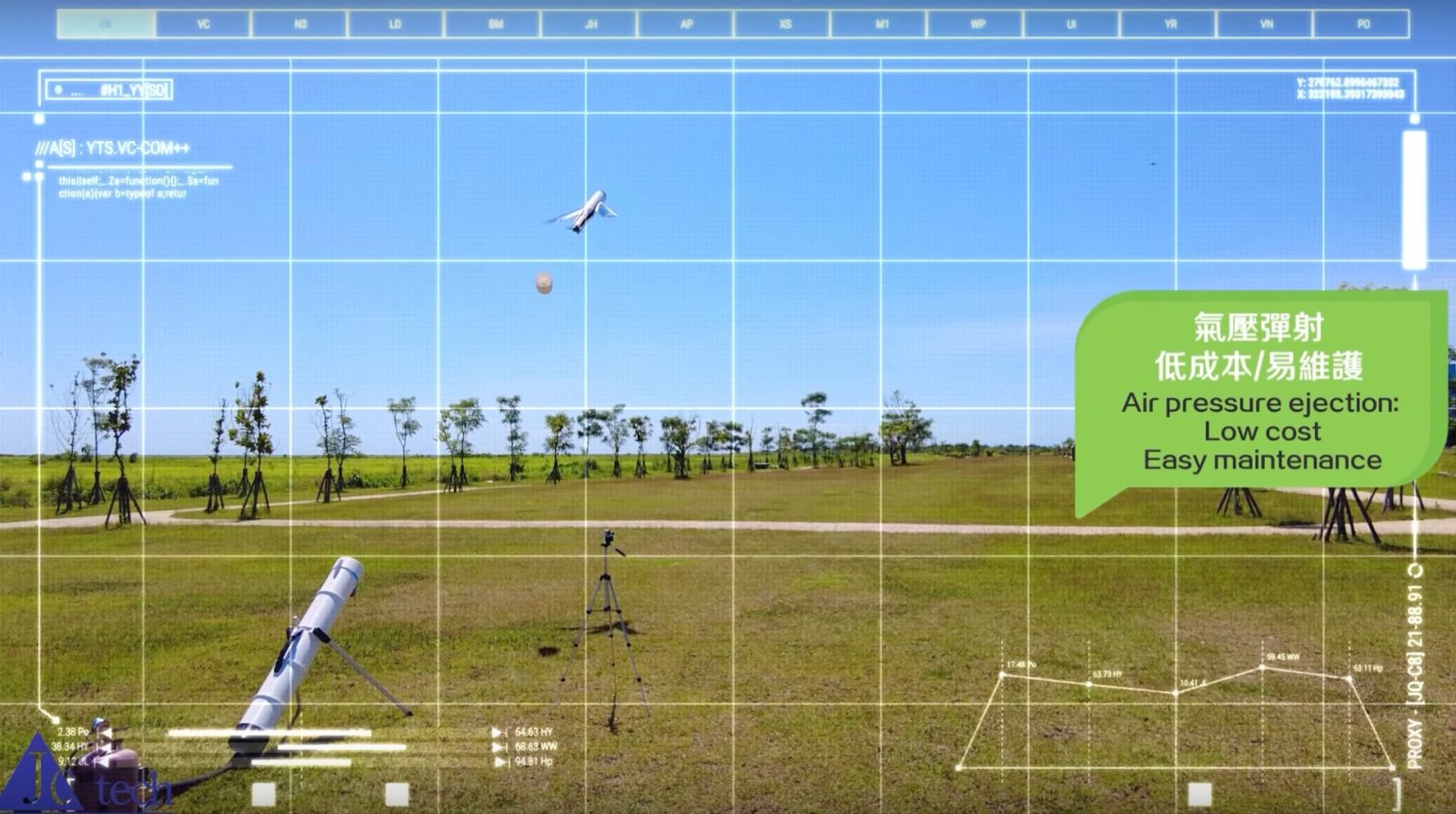
Like many smaller nations living under the menacing shadow of superpower neighbors these days, Taiwan is taking note of Ukraine’s success using drones to push back Russia’s invasion, and is reconsidering the enlarged military potentials of both small and large UAVs to protect its own vulnerable sovereignty.
Specifically, Taiwan is reportedly examining the deployment of smaller drones to supplement its other potential responses to what have been increasingly threatening offshore maneuvers by China in recent weeks. According to a report by the Taipei Times, drone manufacturers on the island nation are shopping around new UAV assets for defensive use by Taiwan’s government, as well as to other small countries in the region feeling intimidation from Beijing.
Leading that aerial charge, the report says, is JC Tech, a drone developer founded in 2018 that expects to sign contracts with Taiwan’s military in coming weeks. Taking cues from the effective use of UAVs by Ukraine in rebuffing invading Russian forces, JC Tech has produced and tested prototypes of its Flyingfish suicide drone, inspired in part by US-made Switchblades whose deployment have helped turn the martial tide in Kyiv’s favor.
Read: Ukraine’s Army of Drones expands pilot training as UAV fleets grow
The Taiwan-built Flyingfish drone comes in three sizes, the middle of which is 1.15 meters long, yet only weighs 2.2 kg with a fully loaded 500 gram payload. That relatively lightweight but explosive cargo capacity – equivalent to about 10 grenades, according to the company – makes the UAV a potentially powerful aerial weapon addition for infantries equipped to carry and deploy in combat situations.
Like US Switchblade craft in Ukraine, JC Tech says the relatively low price of Flyingfish – costing $3,000 apiece – makes it an affordable, massively deployable asymmetrical compliment for Taiwan and other smaller nations that currently rely on large, expensive military-grade UAVs to defend against urban or naval attacks with uncrewed craft. All three sizes of the UAVs use onboard cameras, GPS, and artificial intelligence to identify enemy forces, vehicles, or ships from up to 10 km off, then swoop in to destroy the designated targets.
Also active in Taiwan’s move to develop smaller drones for defensive purposes is Geosat Aerospace & Technology, a company that launched its UAV activity in 2008 with the Albatross UAV. In expanding that craft’s initial capacities, the company has worked with Chungshan Institute of Science and Technology to expand its punch and sophistication.
The current Albatross II iteration adds 100 km to the 150 km maximum range of its predecessor, and has also extended its surveillance and combat drone’s communication’s capacity using microwave and satellite communications tech.
In addition to a new synthetic aperture radar that reduces interference from limited light or poor weather conditions, Geosat Aerospace & Technology says the the Albatross II is compatible with Taiwan’s locally developed air-to-air missiles and 2.75-inch rockets.
Related: Ukraine’s mid-size Punisher drone is living up to its name against Russian forces
That payload adaptability and enhanced capabilities, the company claims, may allow the Albatross II to turn in similarly impressive performances in use that the Turkish Bayraktar TB2 drones have in Ukraine. Unlike JC Tech’s Flyingfish drones, which are already being primed for sales to Taiwan and other regional governments, the Albatross continues undergoing testing ahead of expected mass production next year.
FTC: We use income earning auto affiliate links. More.


Comments